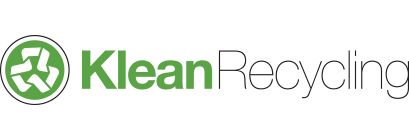Elements
Gold
Gold is a unique element in that it is used as both a commodity and currency. Today, some 40% of the world’s gold is utilized in investments, the other 60% is fashioned into disposable items such as jewelry (50%) and industry (10%). The element is also used, understandably, as a hedge to inflation. Gold is a truly precious element. It’s believed that the world’s supply of gold will remain at the current state with the only differentiation occurring in the exchange of the element. This is why Klean Recycling goes beyond traditional mining and looks to extract gold from cell phones, motherboards, and other electronics. Find out how you could bank on this development now.
Lithium
If oil was the most important resource of the 20th century, lithium could be thought of as its most likely predecessor. Lithium batteries are utilized in just about every major technology known from electronic cars to cell phones. And it’s getting harder to come by. Though it is believed that there is enough of this resource for the foreseeable future, the countries primarily responsible for its recovery are non-Western and mostly considered foes of the United States. For this reason, the need for a lithium source is imperative for the nation. Klean Recycling has already begun working with a partner in Japan to test a possible mine that could allow for a steady supply of the element.
Tungsten
Unless you’re familiar with the inner workings of electronics, you probably don’t know a lot about tungsten. This element is more common that one might think, however, and is responsible for every light bulb filament ever made. Tungsten has the highest melting point of all non-alloyed metals and the second highest of all elements combined. It’s also known for its high density and incredibly hard nature. This makes tungsten the ideal metal for the inside of TVs, phones, computers and much more. Because of this, tungsten is becoming increasingly rare. So rare, in fact, that even Warren Buffett is investing.
As tungsten demand is expected to grow an average of 6% in the coming years, the race is on to find additional mines. Klean Recycling is working diligently to do just this and formed a partnership with Mitsubishi Materials and Sumitomo Heavy Industries early this year to begin operations in Africa and North America.
Palladium
When you think diabetes, palladium most likely doesn’t cross your mind. But to the manufacturers of blood test strips, this element is vital. The same can be said for the manufacturers of catalytic converters and consumer electronics. So why is it on our radar? Palladium shares many properties with platinum and, in manufacturing, can often be traded off. But the precious resource is scarcer than its coveted counterpart and is believed to be valuable, so valuable that many analysts have estimated that its value could quadruple in the next decade.
Neodymium
Widely known for its magnetic properties, neodymium falls in the category of rare earth metals. But it isn’t very rare. The majority of the element comes from China and is used in just about everything from colored glass to lasers. So why is Klean Recycling so interested in this multi-application, widely available material? It’s because it’s so unsafe to mine.
Neodymium is the little magnet that allows your phone to vibrate in your pocket and your iPad to respond to your touch. It’s in the headphones you use while running and in the microphones in computers. Without it, many of the technological developments that you use every day wouldn’t be possible. However, the process of mining this extremely strong magnetic is dangerous. That’s why Klean Recycling is looking to remove the neodymium from discarded electronics… To keep people safe while allowing production of these items to continue. Find out more about how investing in urban mining and neodymium can safeguard your financial future.

